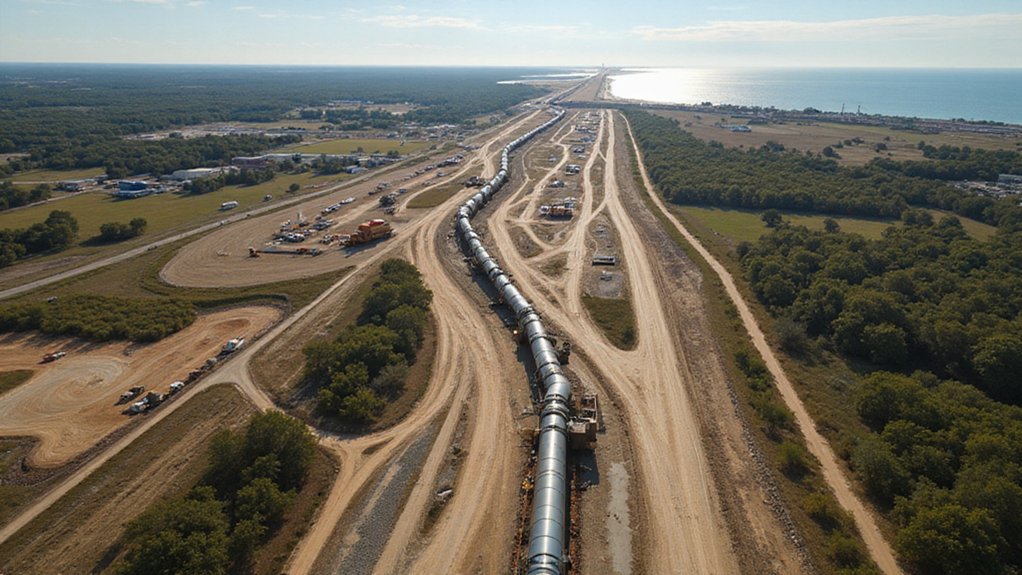Fossil fuel executives talk big about climate action while their wallets tell a different story. Despite forming coalitions and making net-zero pledges, oil and gas companies invested a pitiful 4% of their $2.7 trillion profits into clean energy last year. Meanwhile, they pocket $55,812 per minute and CEOs have earned $1.18 billion over the past decade. Governments remain painfully slow with effective policies. The disconnect between promises and reality? Absolutely staggering.
Dozens of global CEOs are talking big about ditching fossil fuels these days. They’re forming coalitions, making net-zero pledges, and pressing governments to speed up the energy shift. Surveys show many of them recognize the competitive risks of ignoring climate change. Great speeches. Wonderful promises. But here’s the uncomfortable truth—their money isn’t following their mouths.
Record profits tell the real story. The global oil and gas industry raked in a staggering $2.7 trillion in 2023. And what did they do with this cash mountain? A measly 4% went toward clean energy investments. Meanwhile, fossil fuel CEOs pocketed a combined $1.18 billion in compensation over the last decade. Funny how those paychecks often coincide with expanded drilling operations, not climate solutions.
Follow the money, not the promises. Oil execs cash in while the planet burns.
The numbers don’t lie. Despite all the renewable energy hype, global fossil fuel consumption has been rising steadily since 1965. Not slowing down, not plateauing—rising. Energy demand growth keeps outpacing whatever progress we make in reducing fossil fuels’ share of the mix. Poor countries need more energy, rich countries still use too much, and everyone’s still burning stuff. This persistence comes at a tremendous cost, with global energy waste valued at over $4.6 trillion annually—nearly 5% of the entire global GDP. Oil giants like ExxonMobil generate massive profits at approximately $55,812 per minute while climate disasters intensify. Despite accounting for over 75% of global emissions, these nonrenewable sources remain dominant in our energy landscape.
Environmental damage keeps mounting. In 2023 alone, major fossil fuel entities pumped out 33.9 gigatons of carbon dioxide equivalent—up 0.7% from the previous year. Projects like the Willow oil development will spew emissions equivalent to dozens of coal plants. Companies like Peabody Energy remain among history’s largest emitters. And we’re still approving new projects!
The problem? Governments are dragging their feet. Policy frameworks still favor fossil fuels over renewables. Subsidies persist. Regulations lack teeth. CEOs actually complain about this—they want carbon pricing and regulatory clarity to justify shifting their businesses.
But policy inconsistencies and fragmented approaches across regions make progress painfully slow.
References
- https://rmi.org/the-incredible-inefficiency-of-the-fossil-energy-system/
- https://energy-profits.org
- https://influencemap.org/briefing/The-Carbon-Majors-Database-2023-Update-31397
- https://www.ciphernews.com/articles/despite-unprecedented-clean-energy-growth-its-still-a-fossil-fuel-world/
- https://truthout.org/articles/fossil-fuel-giants-with-most-emissions-paid-1-18-billion-to-ceos-in-last-decade/








